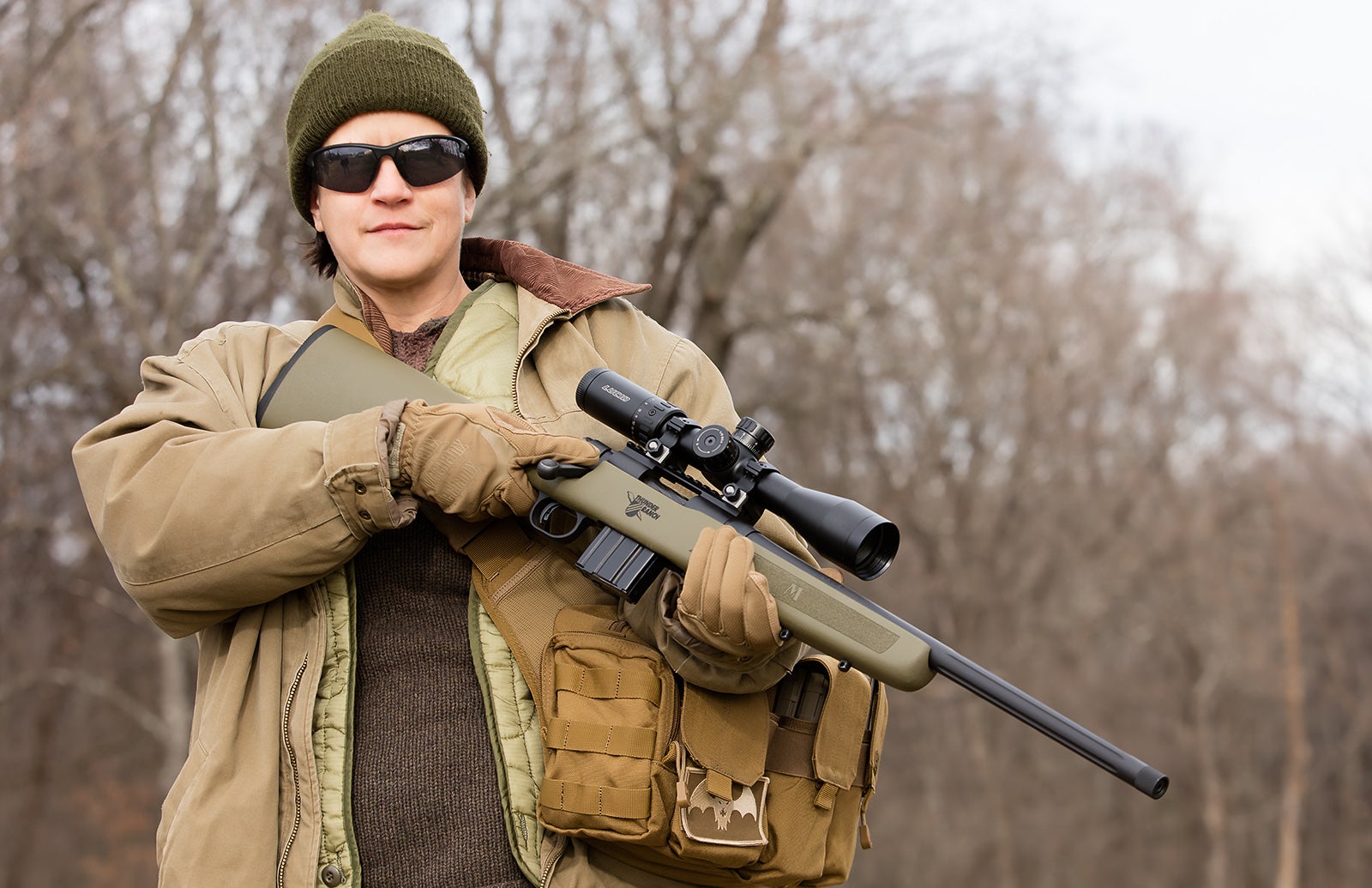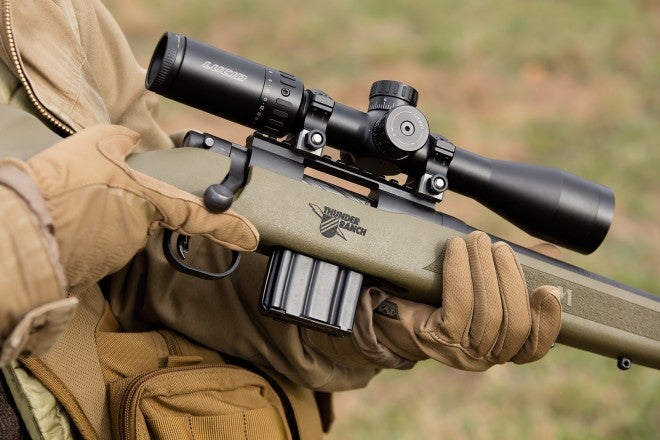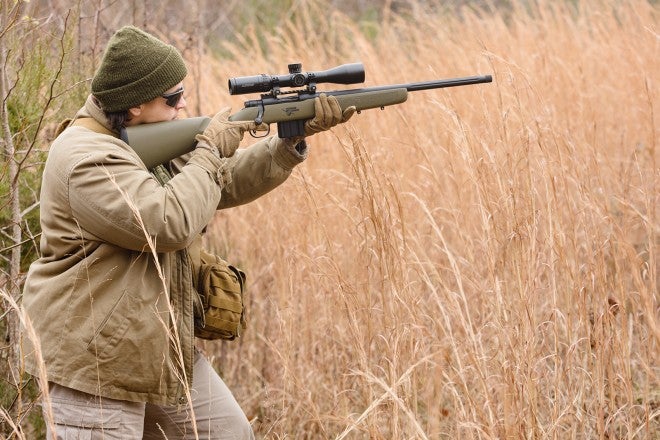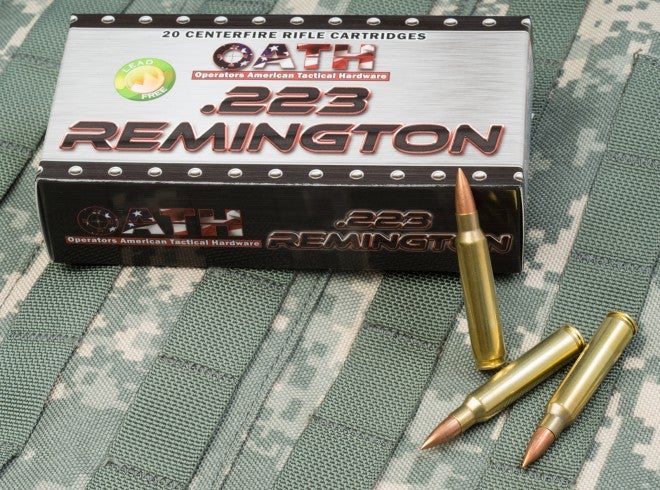Review: Mossberg MVP Thunder Ranch edition
Oleg Volk 12.29.15

The Mossberg MVP series of rifles is one of those good ideas that is so obvious, we wonder why it took so long to implement. With AR15 and AR10 magazines becoming de-facto the standard, cheap, and ubiquitous, it made sense to use them for other types of firearms. A couple of years after Mossberg, Ruger finally followed their lead with their precision .308 rifle.
I tested Mossberg’s Thunder Ranch edition, a .223 gun with a threaded muzzle, out of plain curiosity. It turned out to be an excellent rifle in the spirit of the old “scout” concept, but better.
The original scout rifle, as defined by Jeff Cooper, was to be suitable for defensive or hunting use. The emphasis on stripper clip compatibility required a forward-mounted scope, with all its limitations. It’s available in the canonical .308 or the lightweight .223, MVP replaces fixed magazine with the quick-swap AR mag of any description. You can go from a 5-round box to a 150-round drum in a second. MVP ships with an aluminum 10-rounder, and I found that and 20-rounders to handle the best.
With the bottom-mounted magazine, the top of the rifle has room for a proper optic rail. Mossberg offers a 1-4x scope as an option, and several of the models also have open iron sights. I put a 4-16x Lucid scope on mine because it was more conducive to accuracy testing and hunting small game. Self-defense with the MVP isn’t one of my pressing concerns, but the scope is usable for reactive shooting at its widest setting. I do notice that the updated Thunder Ranch model comes with iron sights. For my taste, I would have preferred a slightly longer optic rail, but the large scope I used is hardly typical for this type of rifle.
The rifle feels so light that the first impression is “flimsy,” but that turned out to be entirely misleading. The build and the fit of the parts proved quite solid. There’s a tiny bit of play with the metal magazine, but none at all with Lancer or Magpul magazines. The rifle comes with front and back sling swivel studs and a third stud for the bipod already installed. Threaded muzzle is definitely helpful, as even the 18.5″ barrel produces visible muzzle flash. I plan on putting a linear compensator on mine. Given the rifle’s excellent balance, a sound suppressor won’t make it too front heavy, so the next thread-on can I get will live on the MVP.
Safety is the conventional lever to the right on the bolt, well detented but not overly heavy. The magazine release is a small lever in front of the magazine, a somewhat odd location. I was, at first, concerned about bumping it by accident, but it proved well fenced by the stock and the magazine itself. Changing the magazine was quick and easy even with heavy gloves on. The usual argument against the use of double-feed magazines in bolt actions is the wider cut in the receiver required by comparison with single-feed magazines.
If the MVP receiver is any less stiff than it should be, my test firing hasn’t shown it! Feeding was reasonably smooth. While most classic bolt actions feel smoother, the feeding was reliable–more than I can say for several bolt actions whose integral magazines feature tilt-prone followers.
The proof of usefulness is in the shooting. The trigger is crisp without being too light. The stock is very comfortable, and felt recoil negligible. Being able to concentrate on accuracy really helped. Firing from a bipod on an afternoon with entirely too much heat mirage coming off the field between me and the target, I still got far better results than I expected and with a wider variety of ammunition.
45 grain L-Tech training frangibles were not supposed to group from a 1:9 barrel, but the groups measured 1.5MOA. 55gr PPU FMJ shot similarly. 55gr Pierce Munitions SP, a known accurate load from a recently defunct company, shot 1.3MOA. 75gr match from PPU and 62gr PMC green tip, the same. The standout of the day was OATH 65gr solid copper match, at 1MOA with all holes touching. Despite my mediocre shooting skills, I was able to replicate the feat consistently until my twenty-round box was gone. The change in point of impact was fairly small, within two inches between the extremes. For a field-weight rifle in my hands, that’s pretty impressive performance.
The sole disappointment with the MVP relates to the finish. The stock seems Cerakoted, at least scuff marks appeared almost at once. The metal finish also showed marks pretty quickly, but those seem to be on the surface only and not go through to the bare metal. Overall, it proved a fun and handy rifle with consistently good accuracy.


